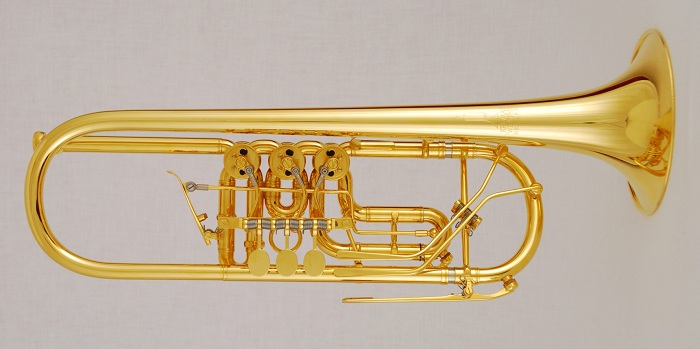
W hile rotary valve trumpets are not strictly speaking historical but rather contemporary brass instruments, trumpet players have in recent years increasingly been using these instruments for all of the Austro-German classical and romantic repertoire from Mozart and Haydn to Bruckner and Mahler... While the use of rotary valve instruments is certainly not historically accurate for the classical and early romantic natural trumpet orchestral literature, many conductors and players seem to feel that the tapered attack and warmer tone quality of these instruments is better suited to the modern performance of natural trumpet parts than the more brilliant and incisive piston valve instrument. There is no question, however, that the rotary valve trumpet is the stylistically appropriate and historically authentic instrument for the late 19th and early 20th century Germanic repertory.”T he Advent program at Annakirche in Vienna last night was excellent.
— David H. Green.
S tefan Fleißner (trpt) and Reinhard Schobesberger (organ) performed a 1-hour program for a delighted audience that completely filled the pews. The trumpet-organ duo works included arrangements of a number of Marienlieder, plus a variety of contemporary Christmas carols, plus the following:
- Clarke – Trumpet Fanfare, Prinz von Dänemark Marsch
- Haydn – Andante, Trumpet Concerto in E-flat major
- Marcello – Concerto in D minor
- Schubert – Ave Maria
- Telemann – Trumpet Concerto in D major
- Bach – ‘Jesu Joy of Man’s Desiring’, from Cantata ‘Herz und Mund und Tat und Leben’, BWV 147
- Torelli – Sinfonia in D major
T he rotary-valve keys have a shorter ‘throw’ (about 1 cm) than piston-valved instruments, so fingering of rapid passages may, in general, be a bit faster on these instruments, compared to on a conventional piston-valved trumpet. Other biomechanics advantages are mentioned by trumpet players who prefer these rotary-valve designs, including better symmetry between left-hand/arm and right-hand/arm musculature, in terms of holding the instrument… no brass crook for the right-hand “pinky,” and therefore no big forces on that little finger to get transmitted into the lumbricals of the other fingers of that hand; no tension in the left-hand; etc.
 T he legato playing of Fleißner was superb throughout. Gorgeous, both in the sacred music and in the secular pieces.
T he legato playing of Fleißner was superb throughout. Gorgeous, both in the sacred music and in the secular pieces. 
- Schlagerl rotary-valve trumpets
- Ricco Kühn rotary-valve trumpets
- Weimann rotary-valve trumpets
- Thein rotary-valve trumpets
- Kuehnl-Hoyer rotary-valve trumpets
- Kromat rotary-valve trumpets
- Dotzauer rotary-valve trumpets
- Green D. A Player's Guide to Rotary Valve Trumpets. Antique Sound Workshop, 2002.
- Wiholm G, Campidell S. Valves and the microstructure of [brass] slurs. Institutes für Wiener Klangstil (Musikalische Akustik), 2009.
- Rotary valve maintenance page at Osmun.com
- TrumpetMaster.com
- TrumpetHerald.com
No comments:
Post a Comment